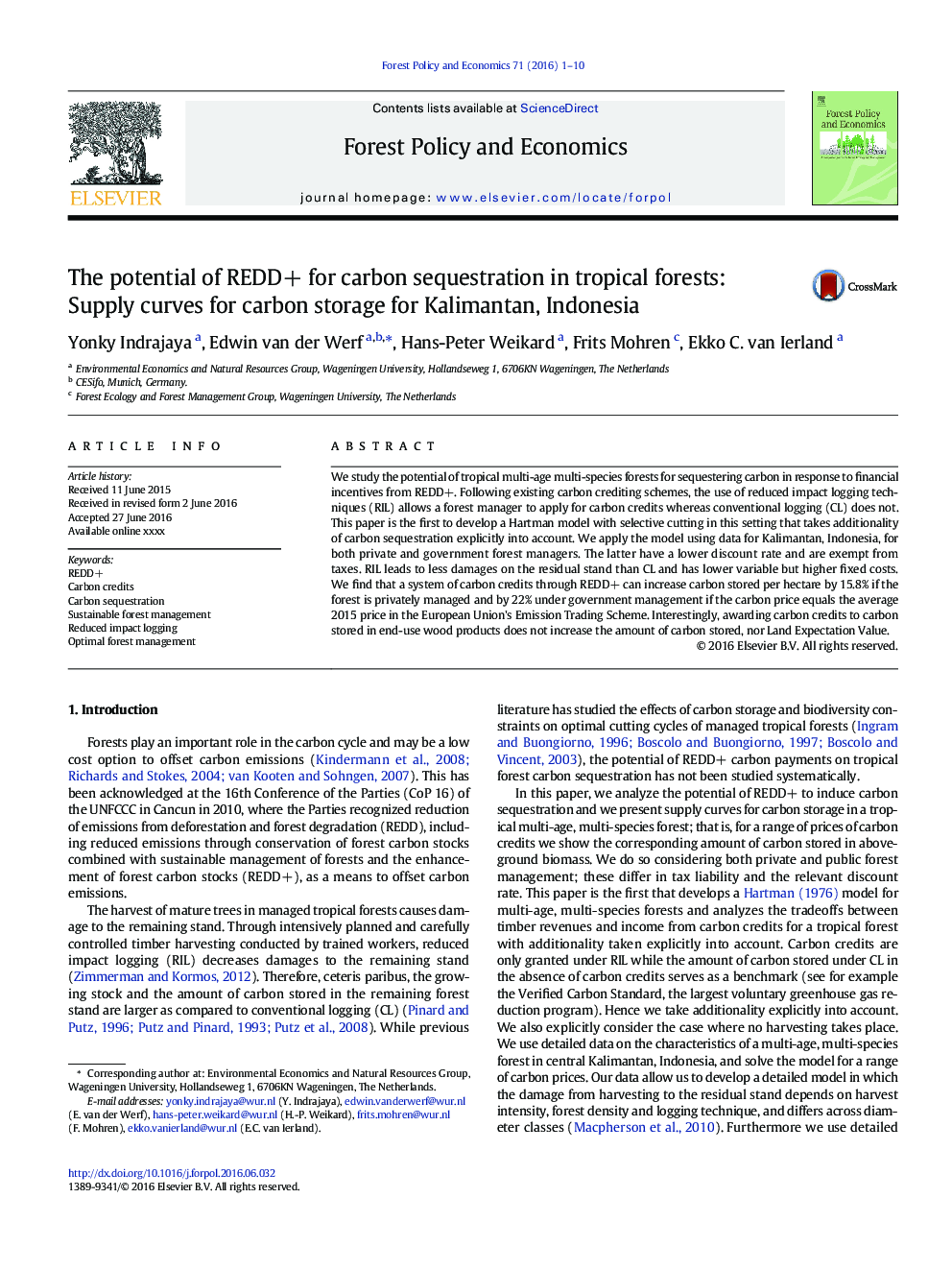| کد مقاله | کد نشریه | سال انتشار | مقاله انگلیسی | نسخه تمام متن |
|---|---|---|---|---|
| 91593 | 159819 | 2016 | 10 صفحه PDF | دانلود رایگان |
• Hartman model of a tropical forest considering carbon benefits
• Derivation of carbon supply curves for Kalimantan
• At current carbon price storage can increase 16–22%.
• Carbon credits for carbon stored in end-use wood products can reduce LEV.
• Credits for end-use wood products do not increase carbon supply.
We study the potential of tropical multi-age multi-species forests for sequestering carbon in response to financial incentives from REDD+. Following existing carbon crediting schemes, the use of reduced impact logging techniques (RIL) allows a forest manager to apply for carbon credits whereas conventional logging (CL) does not. This paper is the first to develop a Hartman model with selective cutting in this setting that takes additionality of carbon sequestration explicitly into account. We apply the model using data for Kalimantan, Indonesia, for both private and government forest managers. The latter have a lower discount rate and are exempt from taxes. RIL leads to less damages on the residual stand than CL and has lower variable but higher fixed costs. We find that a system of carbon credits through REDD+ can increase carbon stored per hectare by 15.8% if the forest is privately managed and by 22% under government management if the carbon price equals the average 2015 price in the European Union's Emission Trading Scheme. Interestingly, awarding carbon credits to carbon stored in end-use wood products does not increase the amount of carbon stored, nor Land Expectation Value.
Journal: Forest Policy and Economics - Volume 71, October 2016, Pages 1–10
